Here’s my guide to visiting the magnificent Tate Britain in London. I give you an overview of the museum and 15 masterpieces you can’t miss.
The museum may not be as wildly popular as its sister-museum, the Tate Modern. But if you’re a lover of British art, the Tate Britain is a must visit attraction in London.
Tate Britain features traditional British art from the 1545 to the present day. It’s home to J.M.W. Turner’s watercolors and dreamy Pre-Raphaelite paintings. Some of the most famous paintings in Britain are housed in this museum.
Of special note, there are 8 entire rooms dedicated to Turner, one of Britian’s greatest artists, in the Clore Gallery. The gallery includes some of Turner’s greatest masterpieces — such as Self Portrait, Peace, Burial at Sea, and Norham Castle, Sunrise.
In addition, the Tate Britain is a pristine glistening work of art itself. The museum boasts a domed rotunda, beautiful spiral staircase, terrazzo floors, and Victorian details.
Built in the late 19th century, the Tate Britain underwent an extensive renovation, which was completed in 2013. The result is an ultra pretty museum experience.
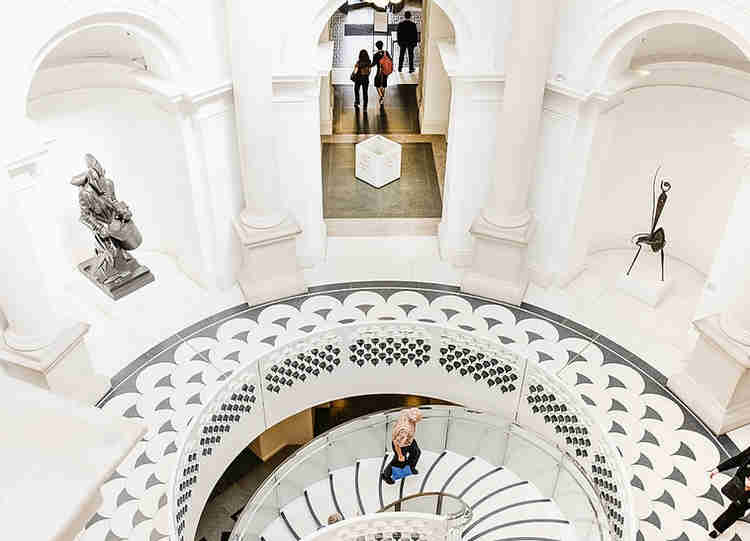
History Of The Tate Britain
The Tate Galleries were named after William Tate. He was a Victorian businessman who made his fortune in the sugar trade.
Tate was also one of Britain’s most important art collectors. Among his most important acquisitions were John Everett Millais’ Ophelia and J.W. Waterhouse’s The Lady of Shallot.
In 1889, he offered to donate his collection to the nation on the condition that a gallery be built to showcase it. Tate even ponied up the money to build the museum.
In 1897, the National Gallery of British Art opened. It was founded as a branch of the National Gallery of Art.
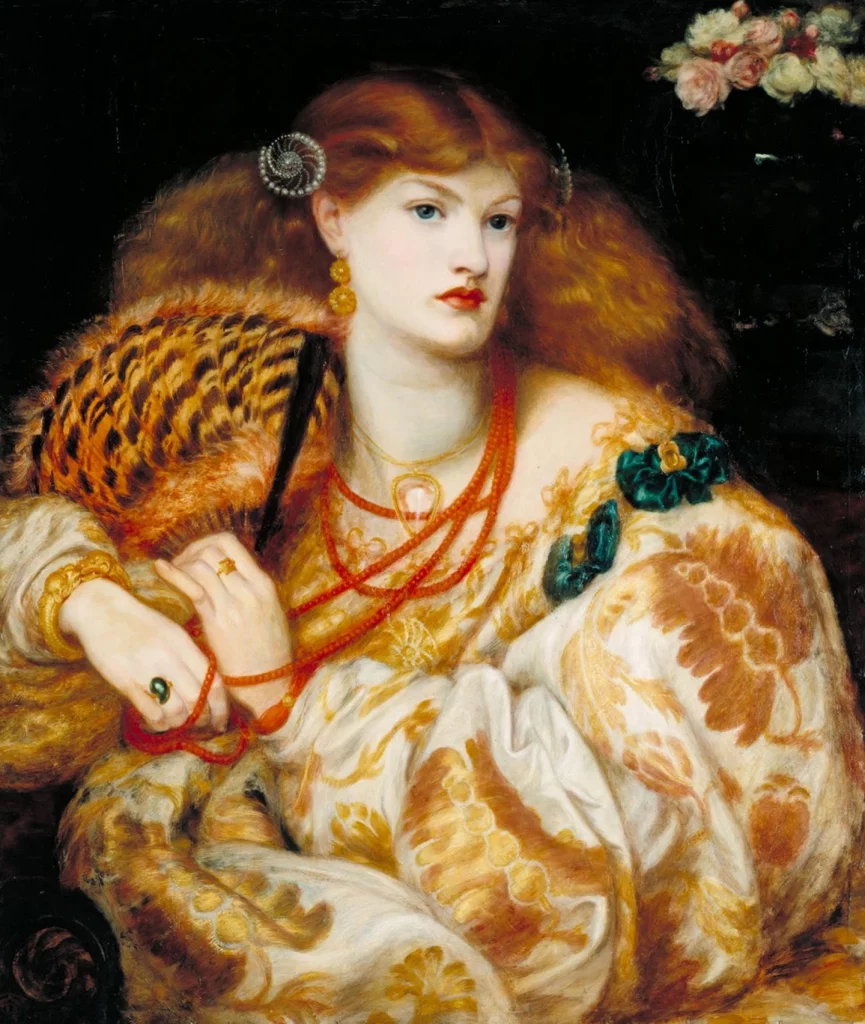
The museum was renamed the Tate Gallery in 1932. Today, there are four Tate galleries in Britain, including the Tate Modern, the Tate St. Ives, and the Tate Liverpool. When the Tate Modern opened, the Tate Gallery was renamed Tate Britain.
Other significant patrons include the Duveen family. They funded large extension to the gallery.
What Exactly Is British Art?
The Tate Britain contains a collection of works made by British artists or that were created in Britain. But what makes British art “British?”
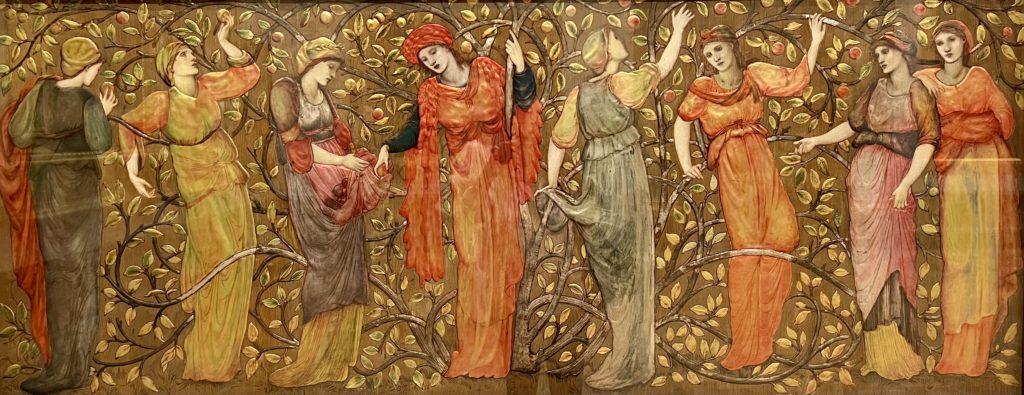
British art followed a somewhat different course of development from mainstream European art.
British art is most remarkable for its dominance of the portraiture genre in the 17th through 19th centuries. In the Georgian period, Joshua Reynolds and Thomas Gainsborough were lionized for their portraits, rendered in an infinite variety of grays and greens.
Britain was also noted for its landscape paintings, especially from the Romantic Age. You’ll find seminal works by luminaries such as Turner, William Blake, and John Constable.
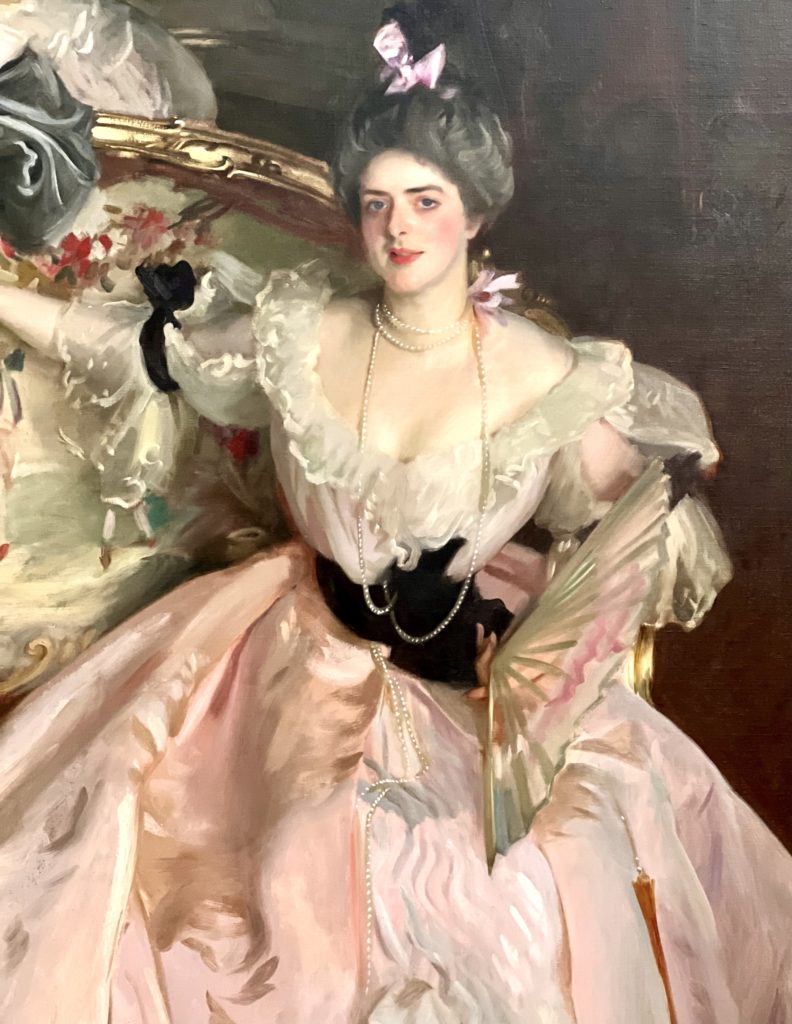
British art also has some unique genres. In Britain, group portraits became known as “conversation pieces.” They were popularized by William Hogarth, Britain’s first native born painter of International stature.
Conversations pieces were informal portraits. They focused on social relationships between friends and family.
The Pre-Raphaelites were also a distinctively British art movement. They wanted to establish a new kind of art in Britain, reviving the methods and ideals of Early Renaissance and Medieval art.
Taking the idea of “truth to nature,” they sought to invest their red headed subjects with a sense of physical and psychological realism. This British school influenced a wider European Symbolism movement.
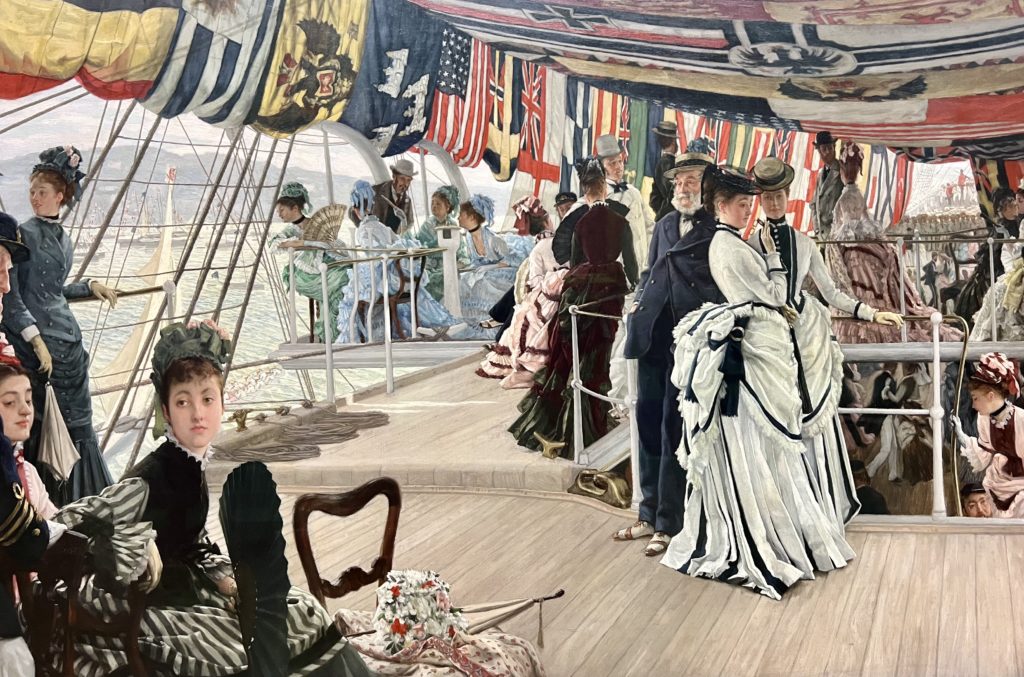
Tickets & Tours of Tate Britain
Tate Britain is free to visit. So you don’t need to pre-book a ticket.
But you may want to book a guided tour of the impressive collection.
Click here for a 2.5 hour guided tour of the collection, which I’ve taken and really enjoyed. You can also book a guided tour of both the Tate Britain and the Tate Modern.
Guide To The Tate Britain: What To See
There are scads of masterpieces at the Tate Britain. Here’s my guide to 15 show-stopping highlights. You’ll see them in mostly chronological order.
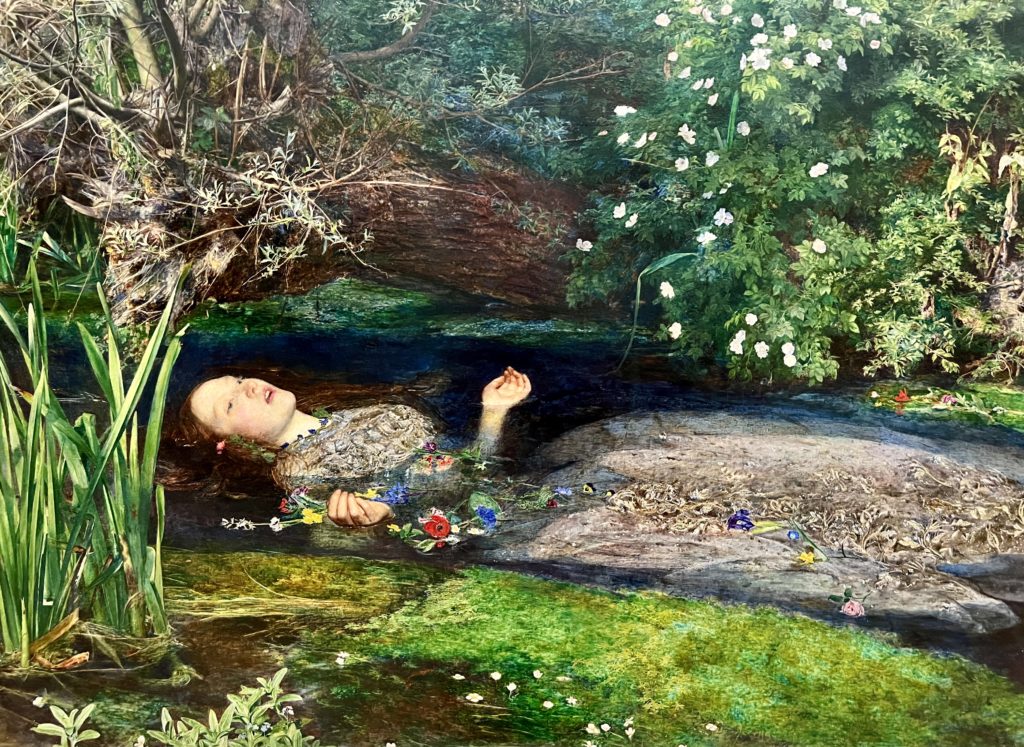
1. Sir John Everett Millais, Ophelia
Ophelia is my favorite painting at the Tate Britain. It’s a classic Pre-Raphaelite work with bright colors, a dreamy visionary quality, and a tragic theme of wasted youth.
The painting depicts the death of Ophelia, a character in Shakespeare’s Hamlet. Ophelia is driven mad with grief when Hamlet murders her father. She falls into a stream and drowns.
In the painting, Ophelia holds a variety of flowers. The poppies symbolize death, the daisies represent innocence, and the pansies reflect blighted love.
In its day, Ophelia was regarded as at the most accurate and elaborate study of nature ever made. The model for Ophelia posed in a bathtub.
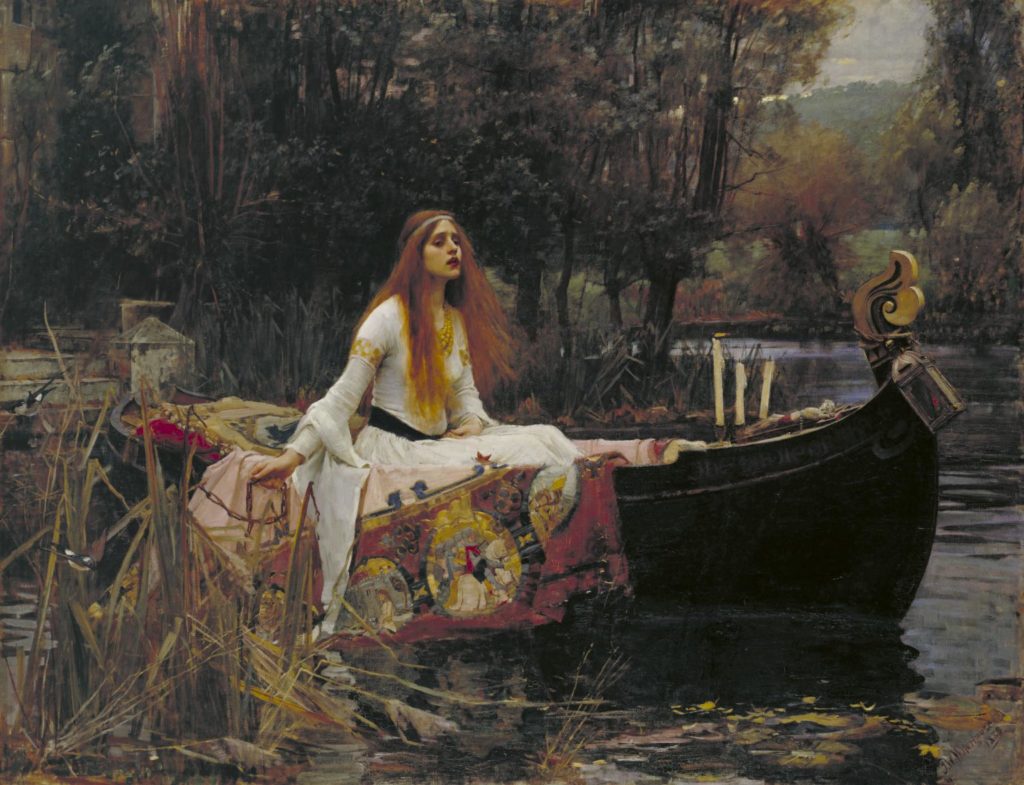
2. John William Waterhouse, The Lady of Shalott
Waterhouse’s The Lady of Shalott is an incredible masterpiece in the Tate Britain. It transports viewers back forty years earlier when the Pre-Raphaelite Brotherhood dominated the middle of the century.
The subject is a vulnerable young red haired woman in white gown. She’s set adrift in a river setting reminiscent of Ophelia.
The painting has the same mythical beauty as Ophelia. But Waterhouse’s painting has a more impressionistic delicacy.
The subject of the painting comes from Lord Alfred Tennyson’s Arthurian poem of the same name. In the poems, she lives isolated in a castle.
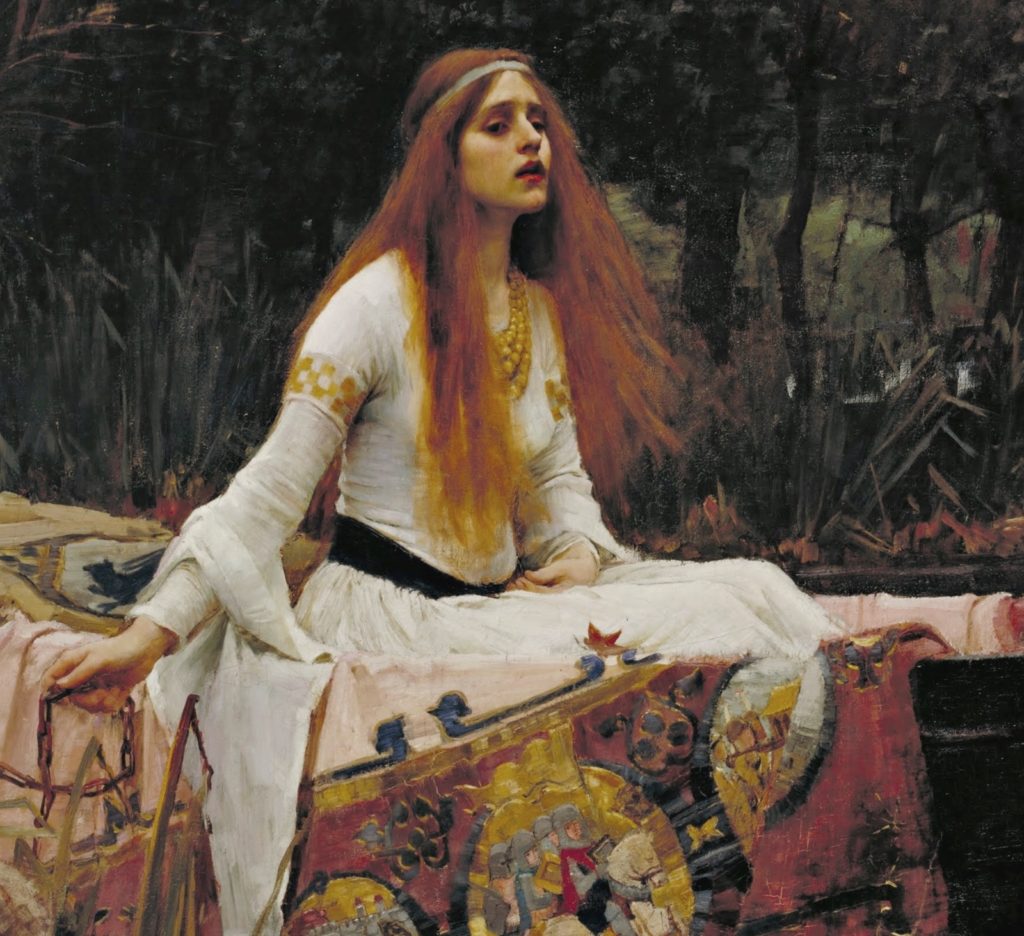
Because of a curse, she is forbidden from looking out her window, upon the pain of death. Instead, she’s relegated to viewing images of the outside world through a mirror.
One day, she sees a reflection of a rather handsome Lancelot. She’s smitten and looks directly at him through the window.
To meet him, she leaves her castle and rides a boat down to Camelot. The tapestry she wove during her confinement is draped over the boat.
But the curse kicks in and she dies before reaching the shore. Here demise is hinted at by a crucifix and three candles in the painting.
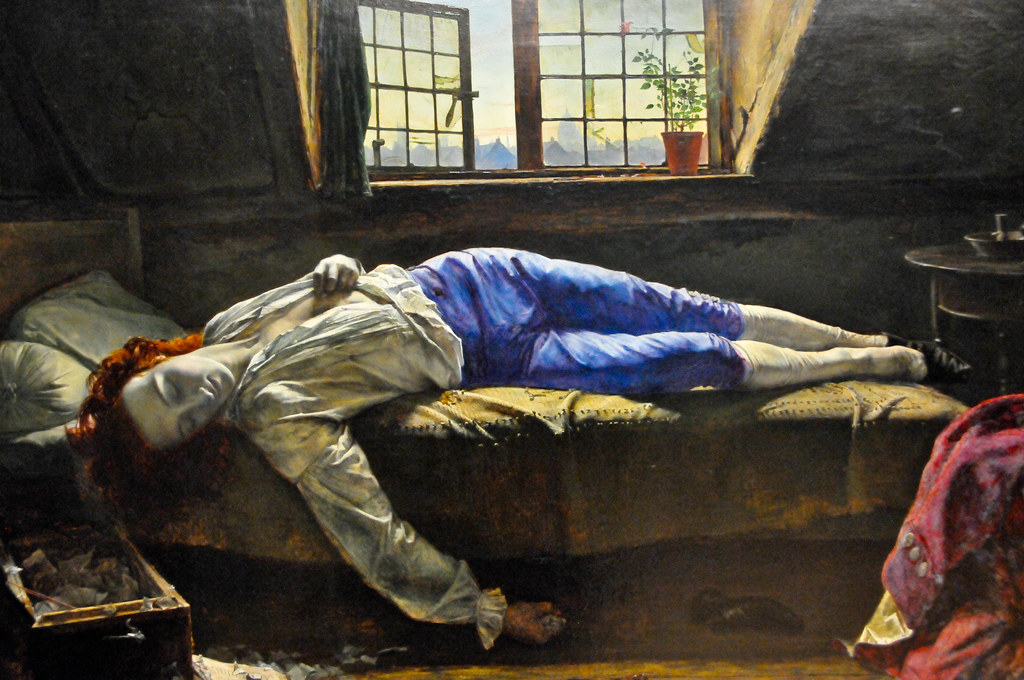
3. Henry Wallis, Chatterton
Chatterton is a highly romanticized painting. It created a sensation when it was exhibited at the Royal Academy. It’s an example of the Victorian approach to history painting.
Thomas Chatterton was a poet and melancholy writer of Gothic themes. Despairing of his lack of literary success, he committed suicide at the age of 17 by swallowing arsenic.
Wallis’ painting shows the pale, still body of Chatterton lying on a bed. His head and right arm dangling loosely over the edge, his tattered papers and the poison vial beside him.
His white shirt and stockings help to silhouette the figure against the darker background. The vivid purple of Chatterton’s knee breeches and his reddish hair grab the viewer’s attention.
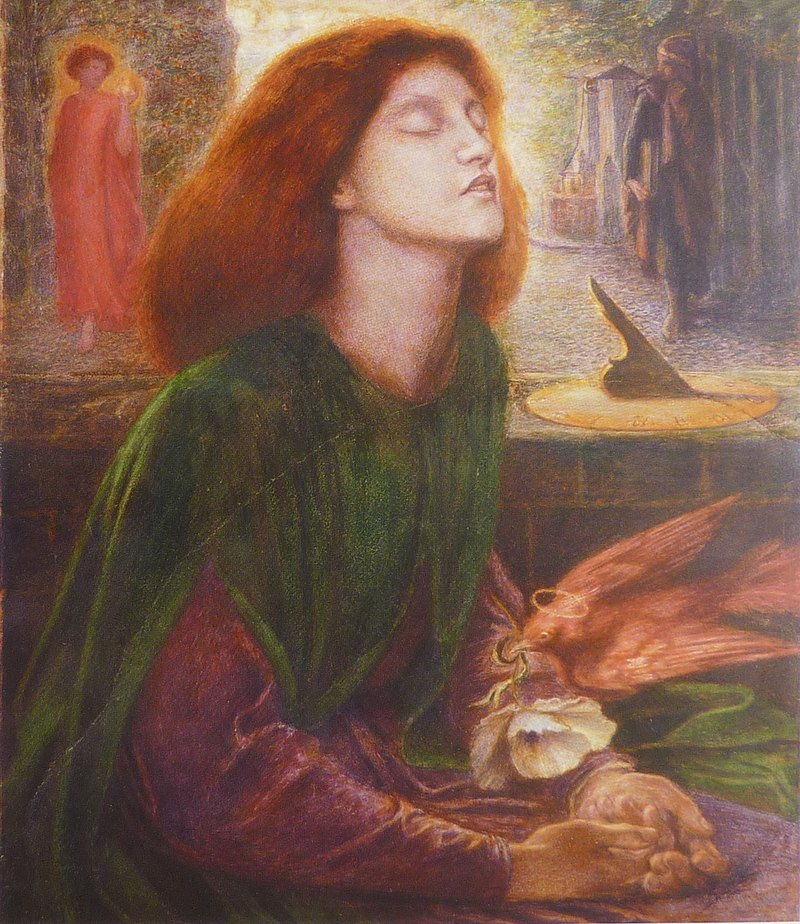
4. Rossetti, Beata Beatrix
This is another Pre-Raphaelite masterpiece at the Tate Britain. The inspiration for the painting was Dante’s Vita Nuova. That work tells the story of Dante’s idealized and unrequited love for Beatrice.
The painting is a portrait of Rossetti’s wife Elizabeth Siddall in the character of Beatrice. In the background, Dante gazes toward his love.
The work has a hazy, transcendental quality. Beatrice is posed in ecstasy. The painting seems like a dream or vision.
The painting is filled with symbolic references. A bird drops a white poppy into her hand, a symbol of death. The dove and the figure of Love are red, the color of passion. The time of Beatrice’s death is seen in the sundial.
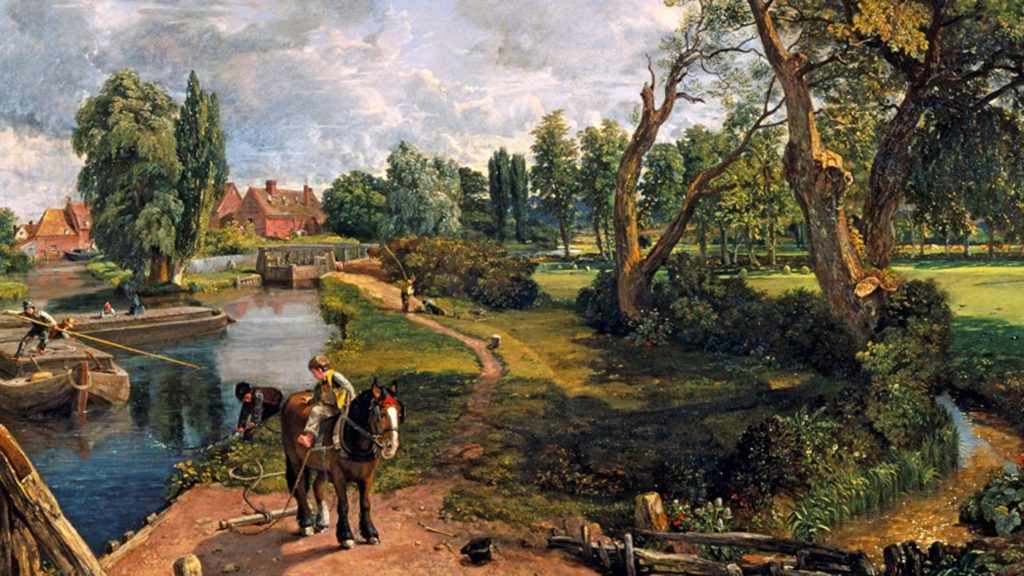
5. John Constable’s Flatford Mill
Along with Turner, Constable revolutionized landscape painting in the 19th century. His paintings had a profound and far-reaching effect on European art, particularly in France.
Constable moved away from the highly idealized landscapes that were the expected norm at the academy. Instead, he favored realistic depictions of the natural world.
Constable was famous for painting the Suffolk countryside and Flatford Mill is no exception. The painting shows men working on the River Stour. It was intended as an expression of the importance and value of rural life.
Flatfoot Mill was Constable’s largest canvas and was mainly painted outside. He called it one of his “six footers.”
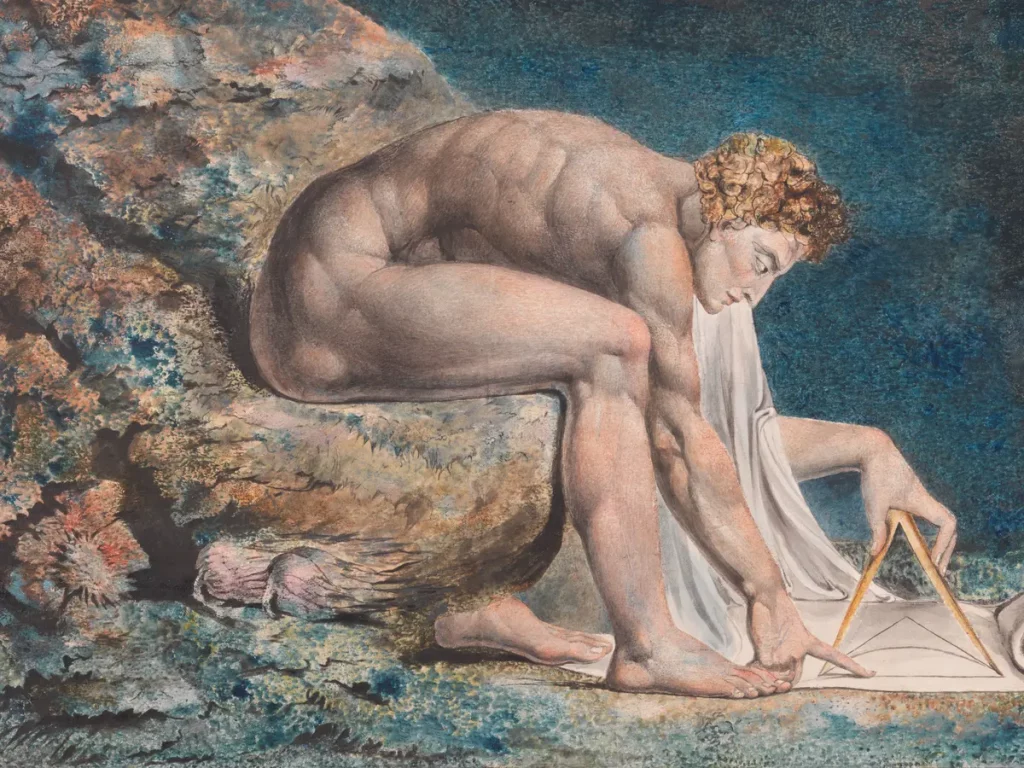
6. William Blake Works
William Blake was an artist who developed radical new approaches to painting and printmaking. He explored highly personal interpretations of Christian themes. Rejecting the academy, Blake became the most radical of leftfield artists.
Nowadays, Blake is a revered hero. He’s considered a seminal figure in the history of the poetry and visual art of the Romantic Age.
But, in his age, he was considered a visionary oddball. And, indeed, Blake claimed to have visions since childhood.
You can see some of Blake’s visions at the Tate Britain. They include The Ghost of a Flea, Newton, and Satan Smiting Job with Sore Boils.
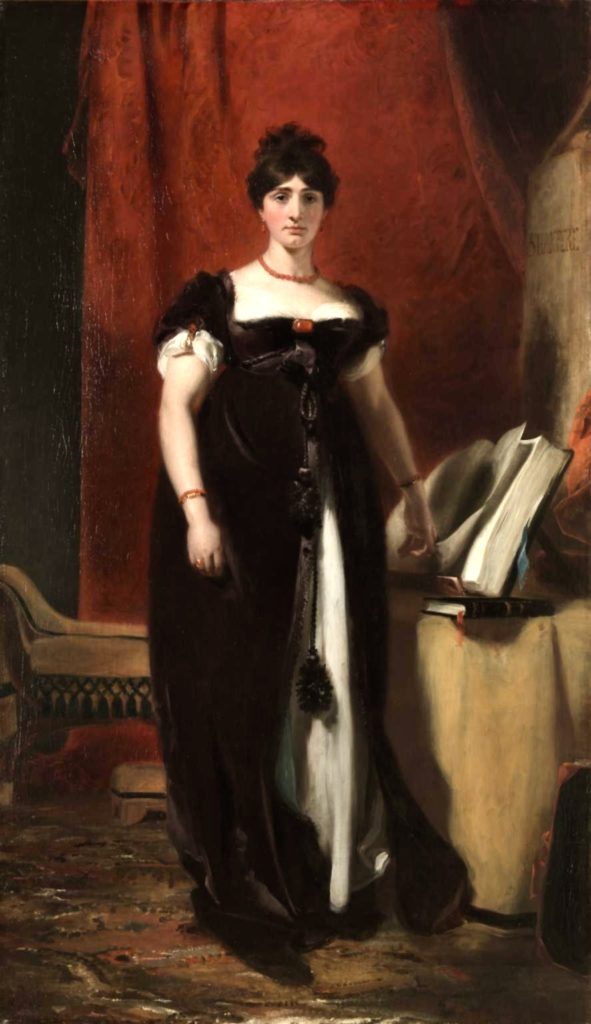
7. Thomas Lawrence, Mrs. Siddons
Lawrence was the most popular English portrait painter of his time. He was famed for portraying the high society ladies in a polished and flattering style. Lawrence became the court painter for King Georg IV.
Lawrence painted many portraits of the actress Sarah Siddons. She was known as the greatest tragic actress of her day.
In this painting, she is shown at one of her dramatic readings. Volumes of plays are next her.
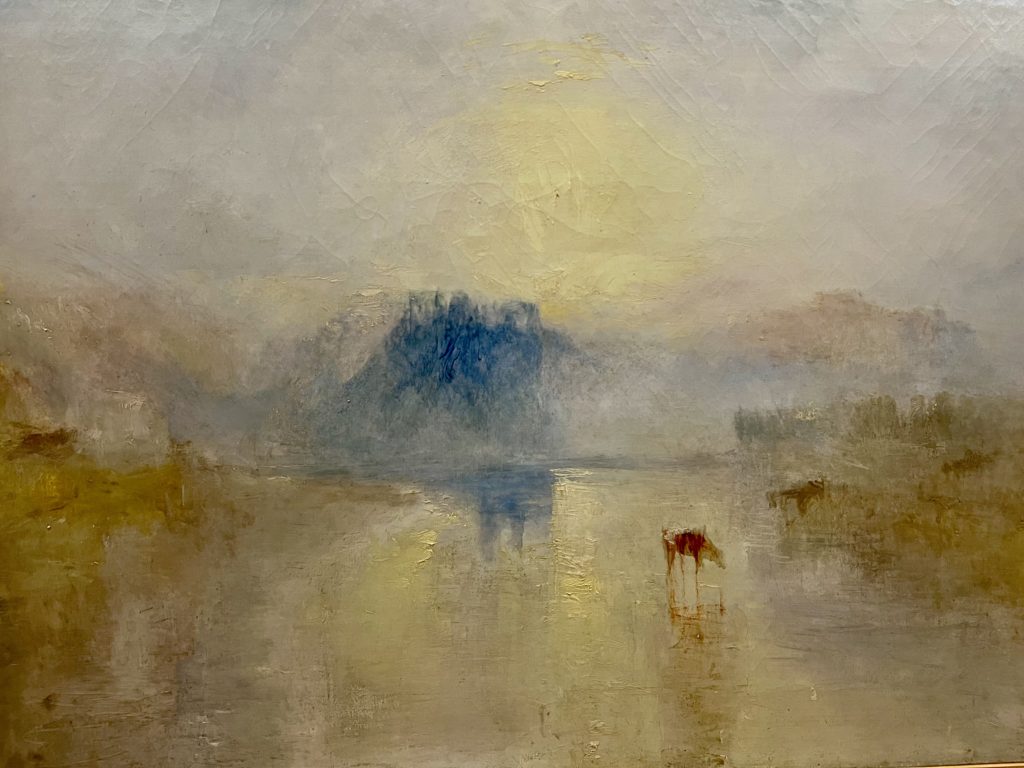
8. Turner Paintings
Turner may be Britain’s most famous and important artist. In the mid 19th century, Turner shocked his colleagues with his loose brush strokes and fiery palette, presaging the later Impressionist movement.
The Tate Britain’s collection of Turner is the world’s largest collection. It includes all the paintings he had in his possession upon his death.
Turner left it to the nation in his will. There are several hundred oil paintings, watercolors, and sketch books. They are displayed in 8 rooms in the Clore Gallery.
Turner’s works range from highly finished scenes to spontaneous impressions of nature. In the early 19th century, Turner concentrated on British subjects, displaying a patriotic sentimentalism.
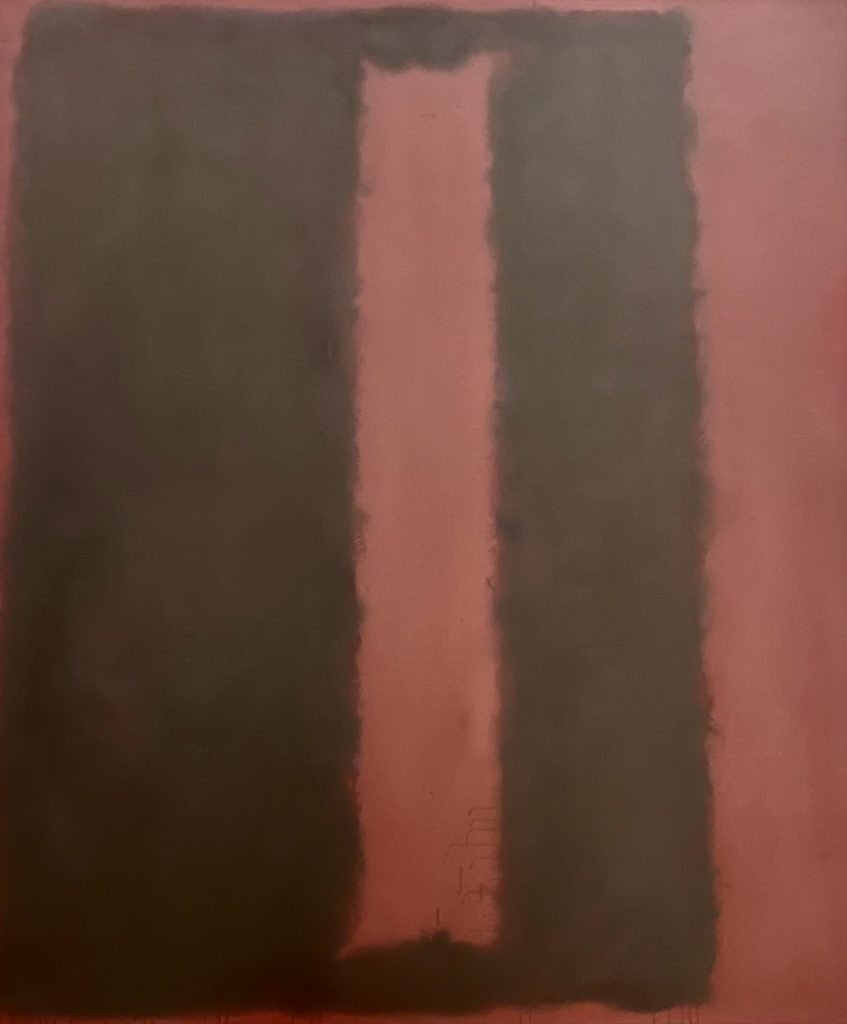
9. Mark Rothko’s Seagram Murals
Mark Rothko is an American abstract expressionist painter. But he drew inspiration from Turner. As a result of his admiration, he gifted a group of paintings to the Tate Britain. It’s in the Clore Gallery with Turner’s works.
Rothko was originally commissioned by Seagrams to create these murals for the Four Seasons restaurant in New York. In 1959, Rothko abruptly quit the prestigious gig. Apparently, he didn’t want his art to be mere decoration for wealthy patrons.
Instead, the Seagram Murals took on a darker and more contemplative turn. Michelangelo’s Laurentian Library in Florence Italy influenced Rothko’s meditations.
He used a somber palette of red, browns, and blacks. Rothko sought to re-create the library’s claustrophobic and sepulchral atmosphere.
The murals are displayed in dark, dimly lit rooms. At the time, some criticized them as “Apolcalypse Wallpaper.”
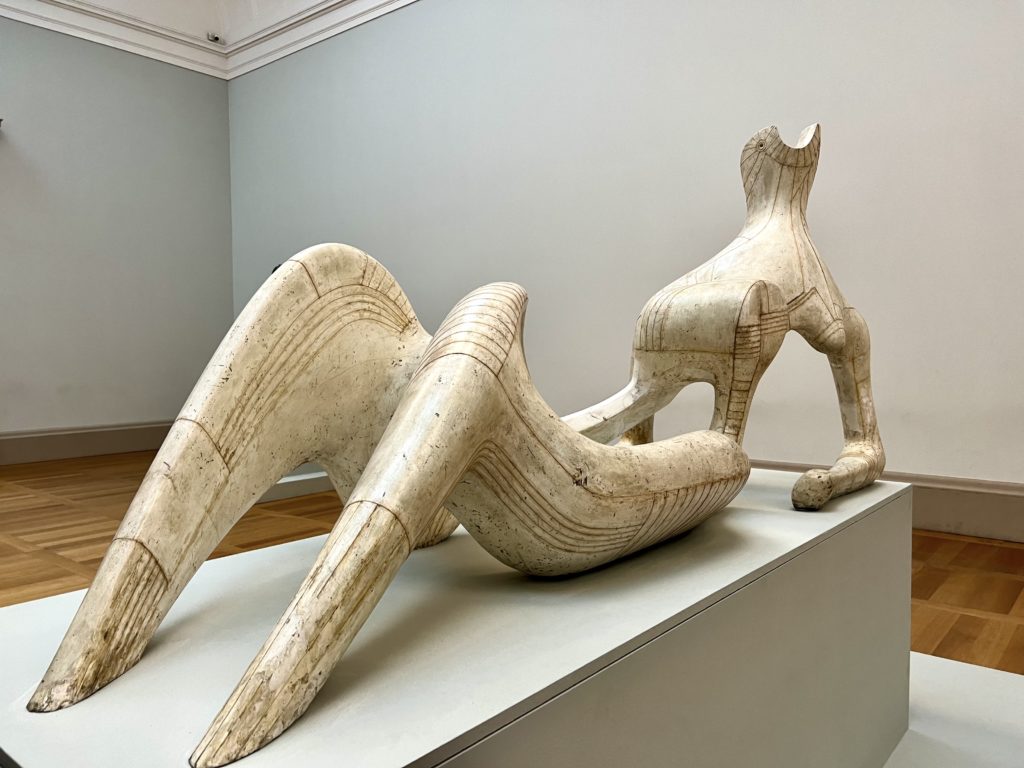
10. Henry Moore Sculptures
Henry Moore burst on to the scene in the 1920s. He was a radical and experimental sculptor. He became the leading sculptor of his generation and a pioneer of modern sculpture.
Moore’s enduring subject was the human body. He saw the countryside as the best setting for his sculptures. Some of his forms are shaped like natural objects such as stones or bones.
Moore’s sculptures are displayed in two dedicated rooms at the Tate Britain. The famous sculptures include Reclining Figure, Recumbent Figure, Family Group, and King and Queen.
King and Queen was created about the same time as the coronation of Queen Elizabeth II. Moore portrays the figures as almost divine beings.
11. Francis Bacon, Three Studies For Figures at the Base of a Crucifixion
Francis Bacon is know for his emotionally charged raw imagery of traumatized humanity. Drifting inbetween figuration and abstraction, his figures are set in isolated and geometric cage-like spaces. They have flat non descriptive backgrounds.
Bacon liked to work in series. He would focus on a single subject for a sustained period of time.
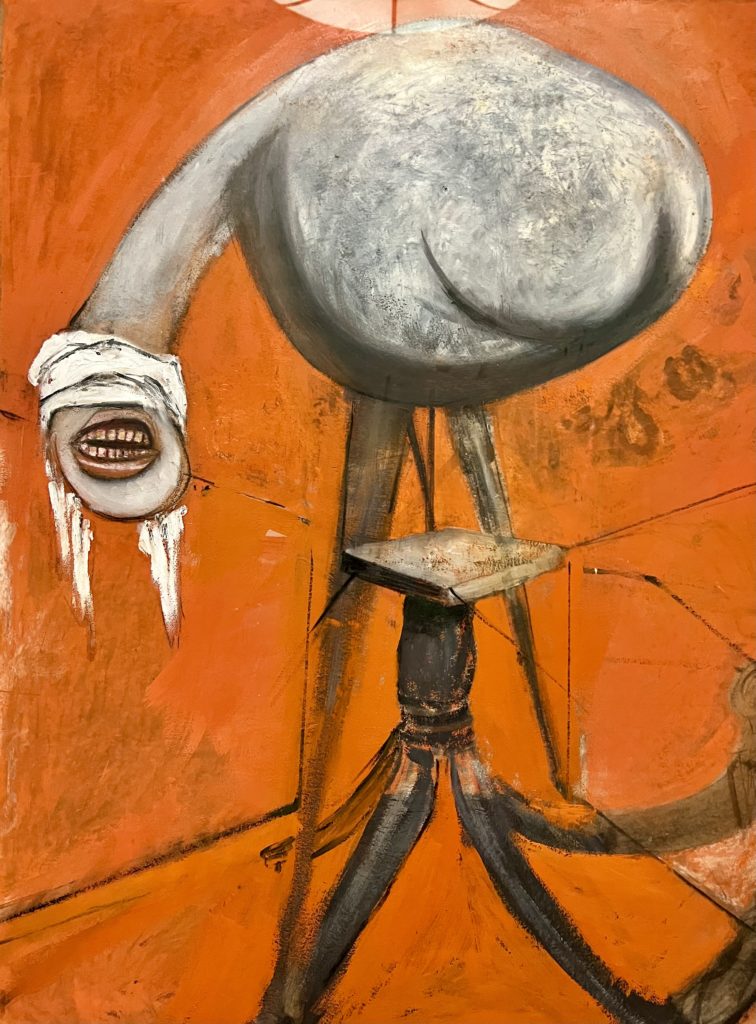
Three Studies was a breakthrough painting for Bacon. It caused a sensation and established him as one of the foremost post-war painters.
It’s not really a crucifixion painting. Bacon later said he was inspired by the vengeful furies of Greece mythology.
This work was first exhibit in 1945. Some historians think Bacon’s work reflects the grim world used in by the Holocaust.
READ: Guide To the Holocaust Museum in Washington D.C.
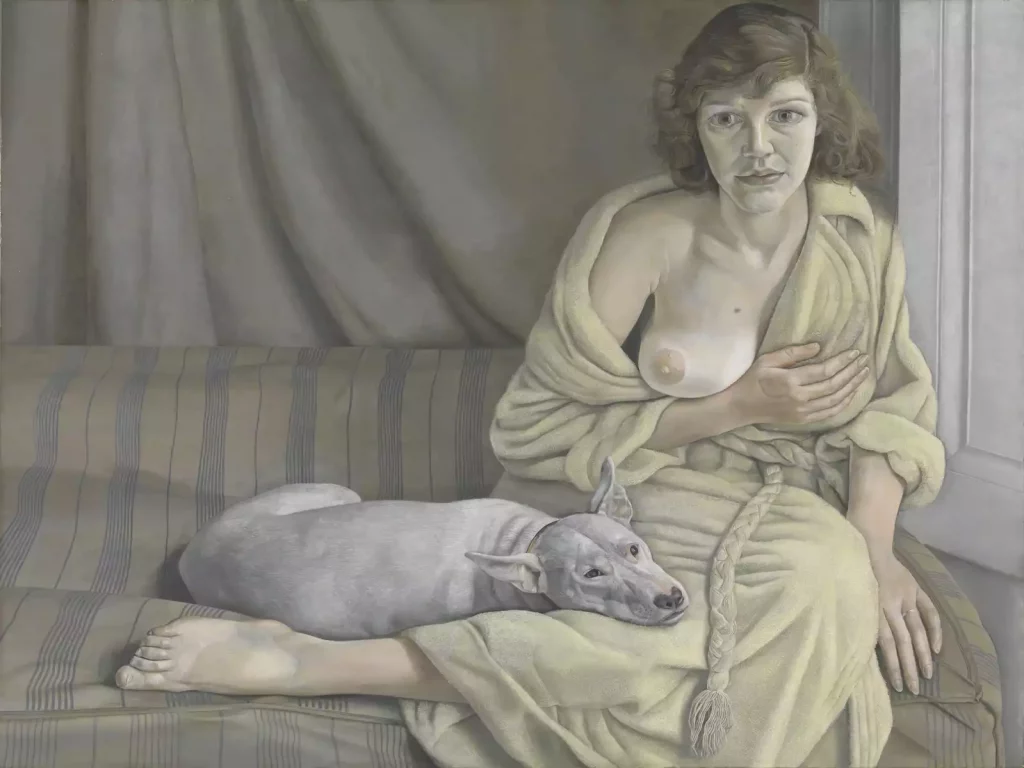
12. Lucian Freud, Girl With a White Dog
Lucian Freud is considered one of the most important figurative painters of the 20th century. He essentially redefined portraiture.
The grandson of the psychoanalyst Sigmund Freud, Freud became famous for his unflinching observations of anatomy and the unsettling intensity of his nude portraits.
Freud used an anti-romantic, confrontational style of portraiture that stripped bare the sitter’s social facade. His images were intensely realized and almost intentionally uglified. Some critics considered Freud the painter of fat people who own their fat.
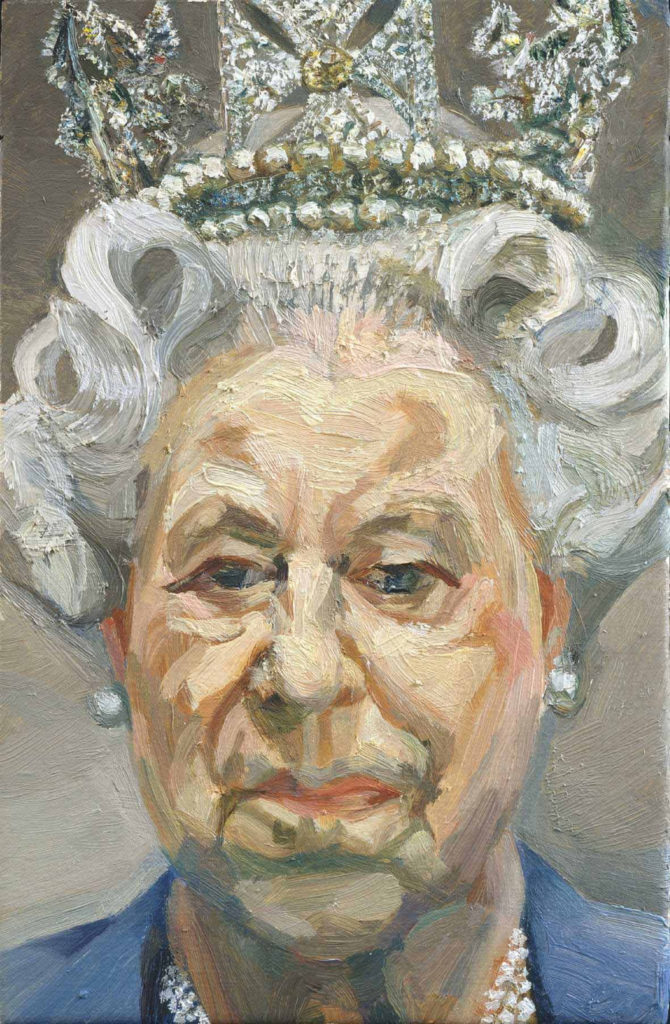
Freud used loose brushwork and richly applied color. His portraits of lovers, friends, family, and celebrities are fleshy, honest, tender, and complex.
Girl With a White Dog is an early portrait of his pregnant first wife. The absence of a title emphasizes the artist’s preoccupation with observation.
The painting depicts a pale woman in a dressing gown clutching a white dog. The longer you look at it, the more uncomfortable the image becomes.
The woman looks calm, but also a little crazy. The dog is a bull terrier.
The blunt muzzle is terrifyingly close to the woman’s exposed breast. Will the dog bite the woman? Will the woman strangle the dog?
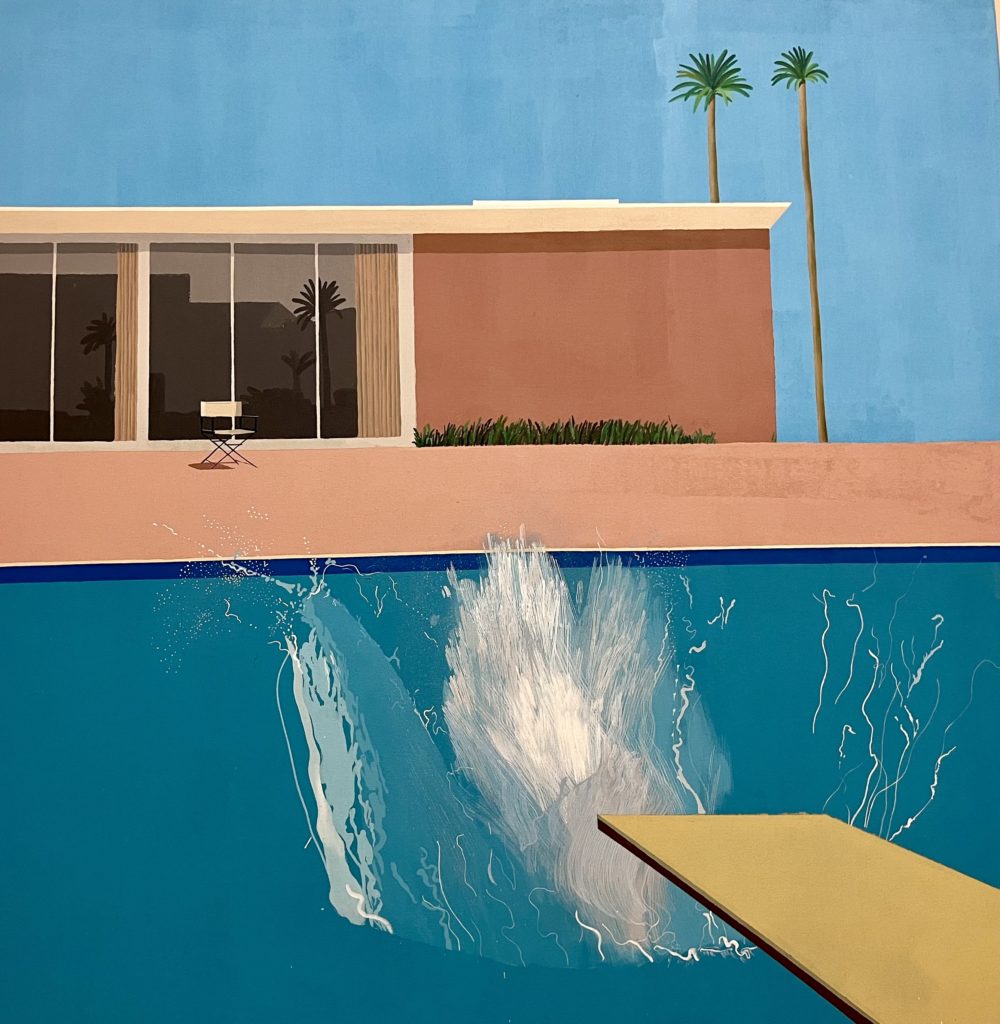
13. David Hockney, A Bigger Splash
Hockney is one of the most recognizable and popular British artists of our time. His main interest is the challenge of representation, trying to capture an object in two dimension.
A Bigger Splash is an iconic work of Pop Art. It was created in the late 1960s when Hockney had moved to California.
It was a post-war period of optimism and Hockney’s depiction of a California swimming pool reflects this.
The painting evokes a glamorous life of sun and leisure. In many of his paintings, Hockney added male figures. But, in this one, the splash is all the suggests a human presence.
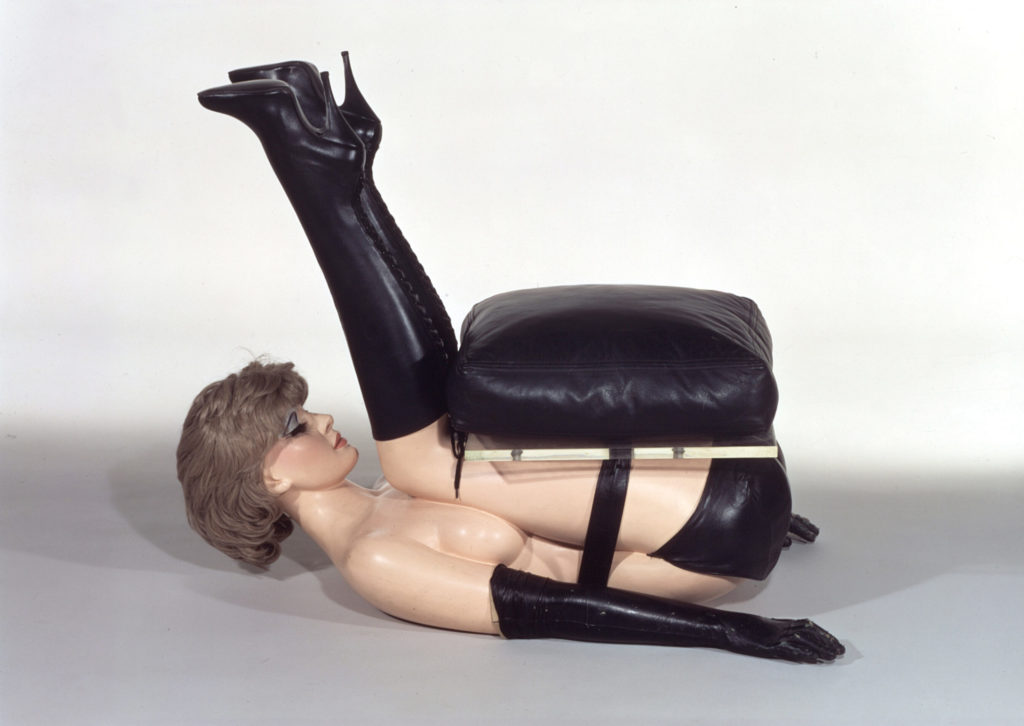
14. Allen Jones, Chair
Allen Jones is a pop artist best known for his figurative paintings and sculpture. His controversial “women as furniture” series sparked outrage for its objectification of the female body.
Chair is a life-size, hyper-realistic female mannequin squeezed into bondage gear. The artist has a fascination with fakery and fetish.
On International Women’s Day in 1986, a demonstrator poured paint stripper over Chair in an attempt to literally deface it.
The sculpture still has the ability to shock today. Some claim it symbolizes female oppression. Others view it as an important object in the canon of art history, a response to the then prevailing Minimalism.
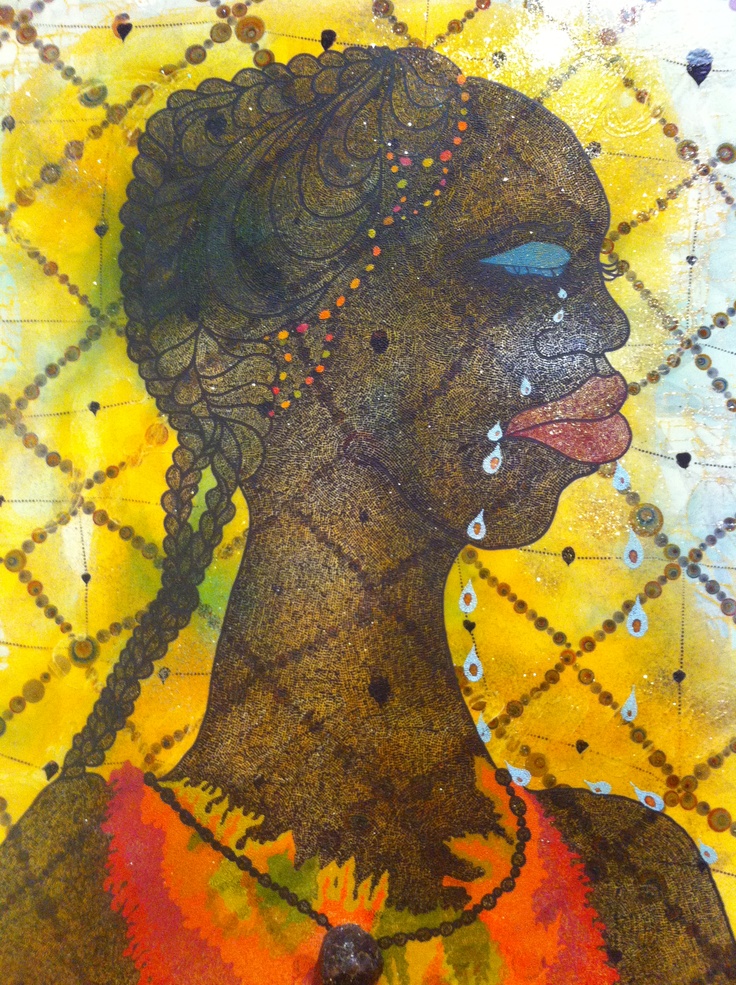
15. Chris Ofili, No Woman, No Cry 1998
This enormous painting and densely layered painting is a tribute to the mother of Stephen Lawrence. He was murdered in a racially motivated attack in 1993. It won Ofili the Turner Prize five years later.
Doreen Lawrence’s profile is set against a collaged backdrop of abstract diamonds shaped forms. Each of her light blue tears contains an image of her son. The words RIP are discernible under the paint.
The canvas is perched on two large pieces of elephant dung, a material Olifi liked to use. It exudes a feeling of universal melancholy and grief.
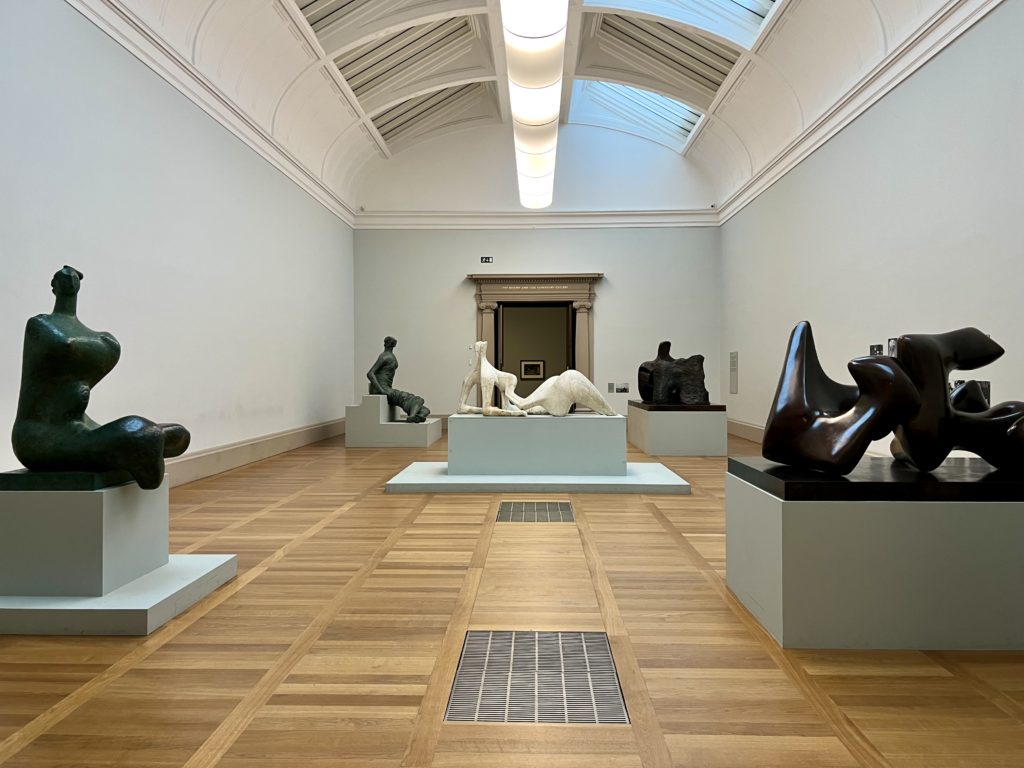
Tours Of The Tate Britain
The Tate Britain is free as I mentioned. But the signage isn’t very good at all.
Because there are so many masterpieces, you may want to book a guided tour.
You can take this 3 hour guided tour or a 3 hour guided tour that includes both the Tate Britain and the Tate Modern.
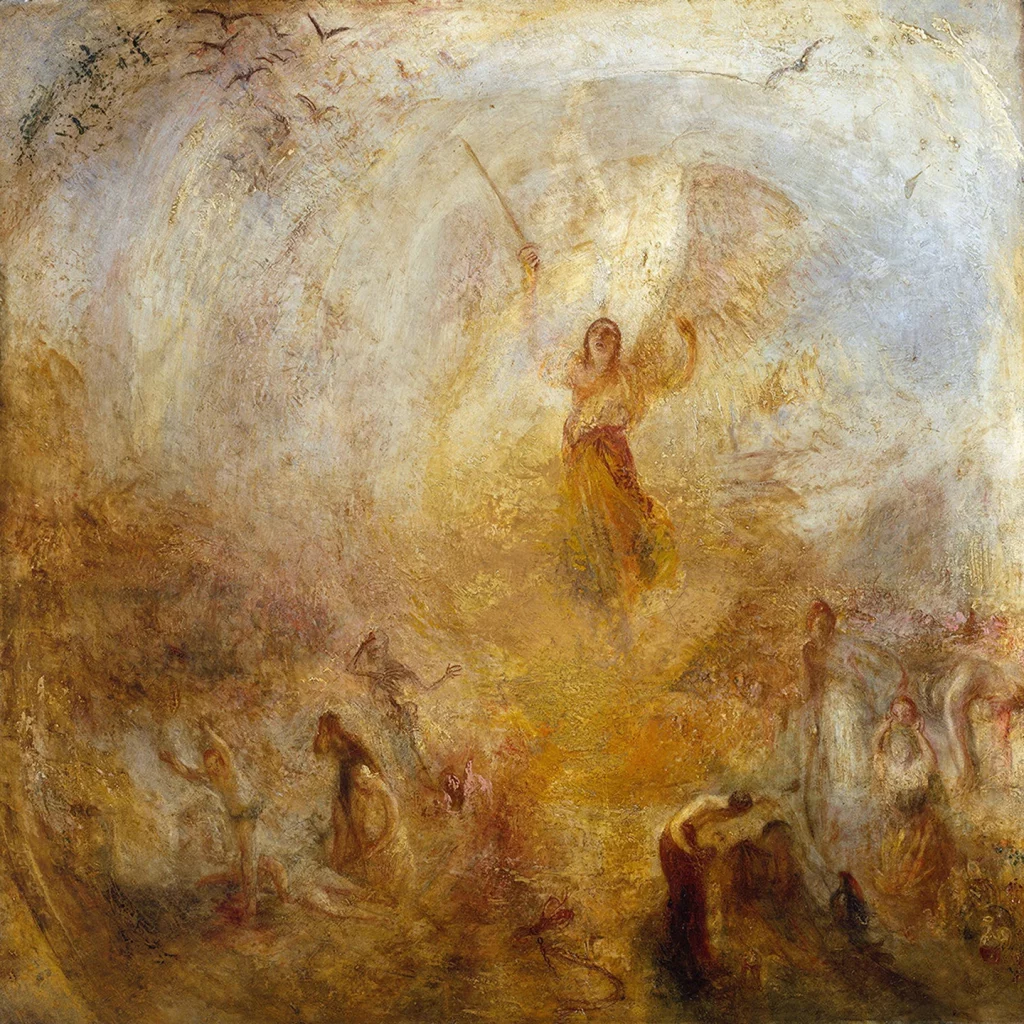
Practical Information and Tips For Visiting The Tate Britain
Here’s some must know information on how to visit the Tate Britain:
Address: Millbank, Westminster, London SW1P 4RG
Entrances:
There are three different Tate Britain entrances:
- The Manton Entrance (on Atterbury Street), which has direct access to the lower floor of the gallery, the Linbury Galleries, and the Hyman Kreitman Reading Rooms.
- The Millbank Entrance, which has access to the upper floor and main gallery areas via 20 steps.
- The North Entrance (on John Islip Street), the most ideal entrance for those parking on John Islip Street via the North Gat
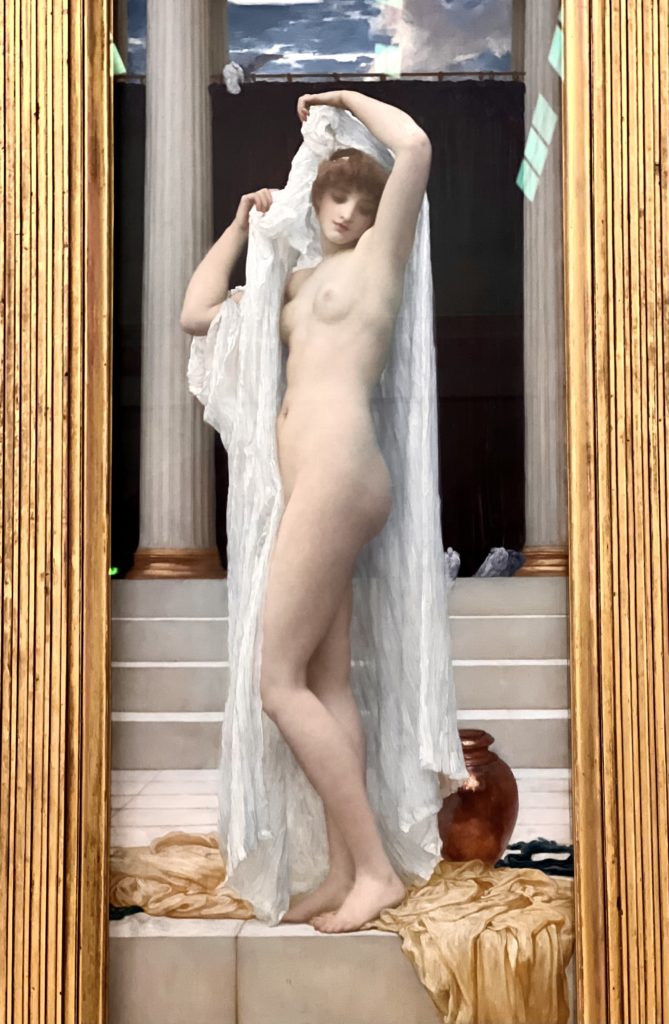
Hours: Open daily 10:00 am to 6:00 pm
Free App:
The Tate has a Bloomberg Connects app to enable visitors to lead their own journey around the galleries on their smartphones.
The app provides a more bespoke, behind-the-scenes, experience than a traditional museum audio guide. It can be downloaded in advance of a visit or in the museum on the Tate’s free Wi-Fi.
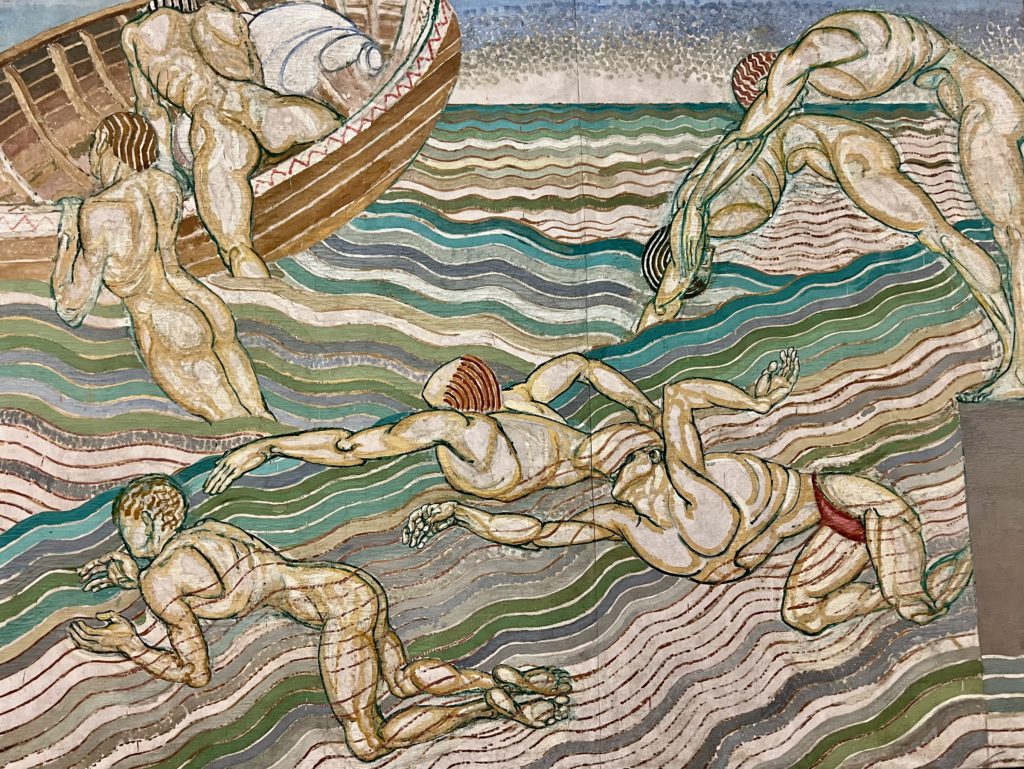
Entry: Free. In high season, you may need to book a timed entry reservation.
Tube stations: Pimlicco, Victoria, Westminster
Cafe:
The museum has a cafe on the lower floor, Djanogly Cafe. It’s a pretty place with vaulted and frescoed ceilings.
You can get a wide variety of sandwiches, salads, tea, and other drinks. The cafe even has a a Hogarth inspired beer.
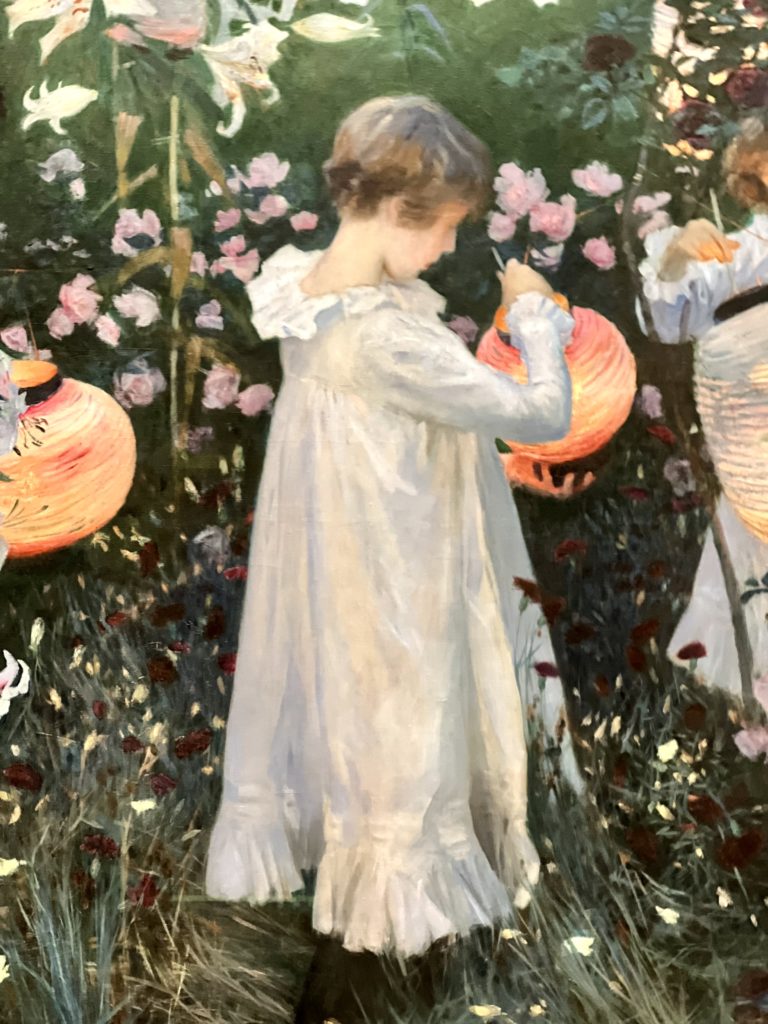
Pro tip: You can take a virtual tour of the Tate Britain on Google Arts & Culture. On the Tate Britain website, you can also listen to curators talk about key art works in the museum.
I hope you’ve enjoyed my guide to the Tate Britain. You may enjoy these other England travel guides and resources:
- 5 Days in London Itinerary
- Guide To Free Museums in London
- Guide To the National Gallery of Art
- Harry Potter places in London
- Guide To the Churchill War Rooms
- Guide To The Wallace Collection
- Tourist Traps To Avoid in London
- Guide To the Tower of London
- Guide To Hampton Court Palace
- Guide To Hatfield House
- Guide To The Henry VII Chapel
If you’d like to visit the Tate Britain, pin it for later.

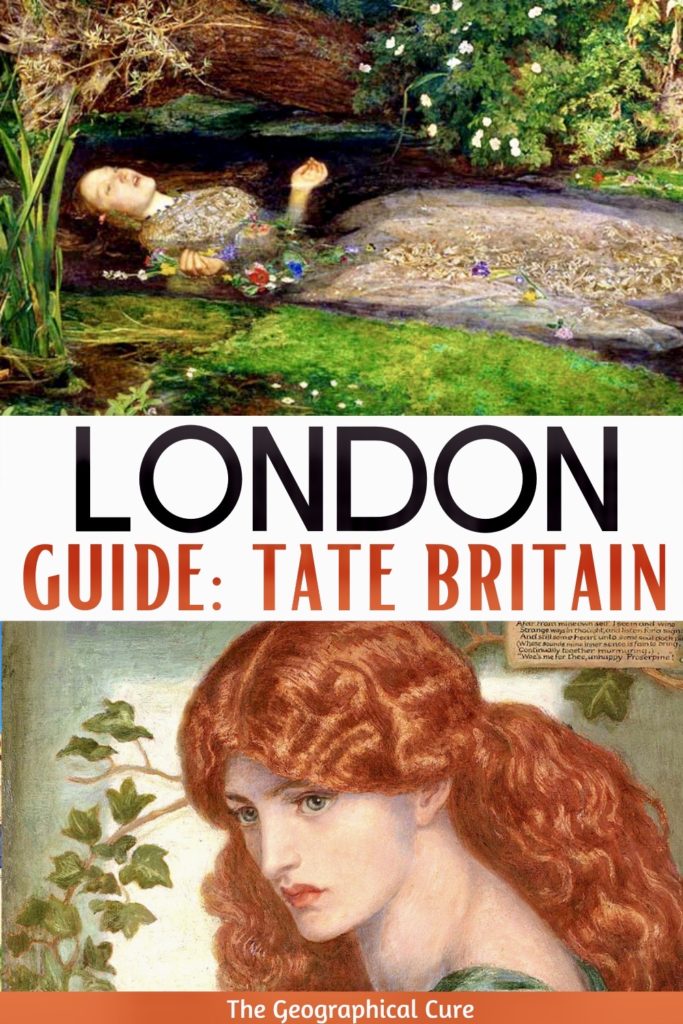
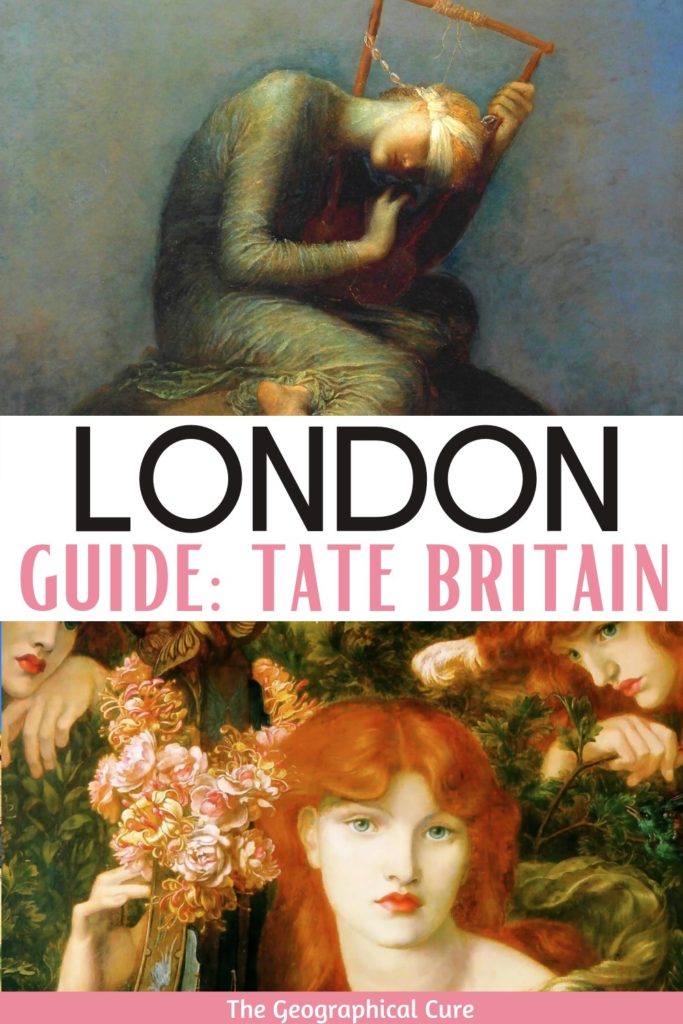
Hi. I visited 31st August 2022 – and none of the Pre Raphaelites are on display at the moment. Thanks for a great article
Oh, I’m sorry, that’s such a bummer! They must be gone as part of a traveling exhibit. I was there in March and they were all on display.